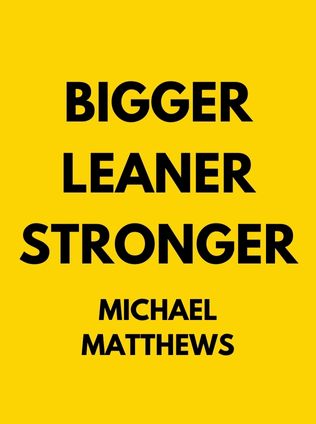
Bigger Leaner Stronger
The Simple Science of Building the Ultimate Male Body
By Michael Matthews
Published 01/2011
About the Author
Michael Matthews is not just another fitness guru; he's a passionate advocate for science-backed approaches to achieving health and fitness goals. A certified personal trainer and the founder of Legion Athletics, a leading sports nutrition brand, Matthews has dedicated his career to helping others achieve their best physiques through a combination of intelligent exercise, balanced nutrition, and realistic goal setting. His writing reflects his belief in the power of simplicity and consistency, and he has authored several best-selling books, including Thinner Leaner Stronger, a fitness book specifically tailored for women, and The Shredded Chef, a cookbook that bridges the gap between delicious eating and muscle-building nutrition.
Main Idea
The central premise of Bigger Leaner Stronger is that achieving your dream physique doesn't require extreme diets or punishing workout regimens. Instead, Matthews argues that a science-based approach to nutrition and exercise, centered on two key principles—flexible dieting and progressive tension overload—is the most effective and sustainable path to a leaner, stronger body. By mastering these techniques, you can shed fat, build muscle, and maintain your progress without giving up the foods you love or spending countless hours in the gym.
Matthews’ step-by-step guide offers more than just practical advice; it delves into the science behind why these methods work, empowering readers with the knowledge to take control of their health and fitness journeys. The book is not just a collection of tips and tricks; it’s a comprehensive blueprint for achieving long-term success, all while debunking common fitness myths and misconceptions.
Table of Contents
- Introduction
- Part 1: Get Motivated for Your Fitness Journey
- Part 2: Use Flexible Dieting to Build Muscle and Burn Fat
- Part 3: Use Progressive Overload to Maximize Strength Gains
- Conclusion
Introduction
Matthews begins Bigger Leaner Stronger by addressing one of the most common barriers to fitness success: motivation. He emphasizes that before you can embark on a journey to transform your physique, you must first get into the right mindset. This involves clarifying your reasons for wanting to get stronger and healthier, and setting clear, achievable goals that will keep you focused and driven over the long term.
“Motivation is what gets you started. Habit is what keeps you going.” This quote, often attributed to Jim Ryun, encapsulates the essence of Matthews’ approach. He argues that while initial motivation is crucial, developing the right habits is what will ultimately lead to lasting change. Matthews suggests that readers take time to reflect on their personal reasons for wanting to improve their bodies—whether it’s to feel more confident, to be more active with family, or simply to enhance overall health—and to write these reasons down as a constant reminder of their goals.
Part 1: Get Motivated for Your Fitness Journey
In this section, Matthews dives deeper into the psychology of motivation and willpower. He introduces strategies to strengthen your resolve and help you stay on track, even when faced with temptations that could derail your progress.
Identify the Reasons for Your Fitness Journey
The first step in Matthews’ motivational strategy is to clearly define the reasons behind your desire to get fit. He advises that these reasons be both personal and meaningful, ensuring they resonate deeply with your core values. This not only solidifies your commitment but also provides a powerful anchor to return to when challenges arise.
Sign up for FREE and get access to 1,400+ books summaries.
You May Also Like
The Subtle Art of Not Giving a F*ck
A Counterintuitive Approach to Living a Good Life
By Mark MansonRich Dad Poor Dad
What the Rich Teach Their Kids About Money - That the Poor and Middle Class Do Not!
By Robert T. KiyosakiHow To Win Friends and Influence People
The All-Time Classic Manual Of People Skills
By Dale Carnegie



















